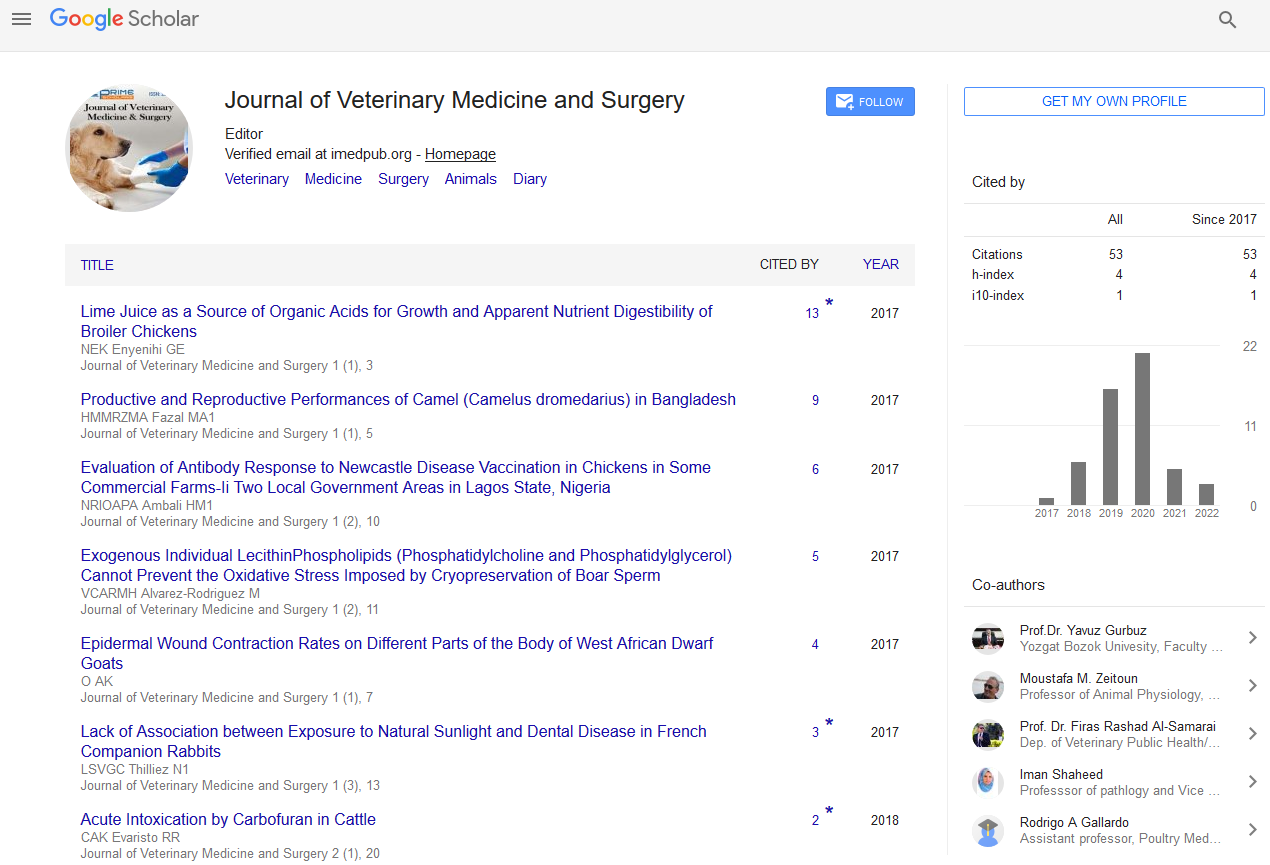Negassa Feyissa1*, Ashenafi Feyissa Beyi2, Gezahegn Mamo2, Fufa Dawo2 and Endrias Zewdu
Gebremedhin1
1Department of Veterinary Laboratory Technology, Ambo University, Ambo, Ethiopia
2Department of Veterinary Microbiology, Immunology, Epidemiology and Public Health, Addis Ababa University, Addis Ababa, Ethiopia
- *Corresponding Author:
- Feyissa N
Department of Veterinary Laboratory
Technology, Ambo University, Ambo, Ethiopia
E-mail: negassa.feyissa@yahoo.com
Received Date: January 2, 2019 Accepted Date: January 17, 2019 Published Date: January 24, 2020
Citation: Feyissa N, Beyi AF, Mamo G, Dawo F, Gebremedhin EZ (2020) Isolation and Identification of Aerobic Bacteria and Influenza Virus 3 from
Nasal Passageway of Camels and Outbreak Investigation in Borana, Southern Ethiopia. J Vet Med Surg. Vol. 4 No. 2: 25.
Copyright: © 2020 Feyissa N, et al. This is an open-access article distributed under the terms of the Creative Commons Attribution License, which
permits unrestricted use, distribution, and reproduction in any medium, provided the original author and source are credited.
A cross-sectional study was conducted from December 2013 to March 2014 A total of 175 camels (140 apparently health and 35 clinically sick) were sampled. The samples from sick camels were used both for bacterial and viral isolation. The risk factors such as geographical location (districts), sex and age were assessed for their association with the respiratory diseases in the study area. Univariate logistic regression was used to test the association of the risk factors with the respiratory problems. Accordingly, 80% of the samples yielded at least one type of bacterial colony. A total of 274 isolates from 140 swab samples were obtained. The most frequently isolated pathogens significantly associated with respiratory signs (p ≤ 0.05) were Pasteurella maltocida (22.3%), Staphylococcus aureus (21.7%), E. coli (20.6%), Streptococcus pyogenes (14.3%) and Mannhemia hemolytica (12.6%). Out of 35 nasal swabs from clinically sick camels, 13 (42.9%) samples exhibited morphologic alterations or cytopathic effect (CPE) on VERO cell monolayer. Five of these CPE positive samples were checked for the presence of Parainfluenza virus 3 (PIV 3) and were all positive using RT-PCR. The isolation of the bacteria from both health and clinically sick camels could be the indicative for the residence of the microflora in upper respiratory tract and involve in causing diseases under some difficult conditions such as viral infection. The isolation of PIV3 from camels with respiratory signs is suggestive for the distribution of the virus in the study area and the involvement of it in causing respiratory disease outbreak in camels of Borana Zone.

